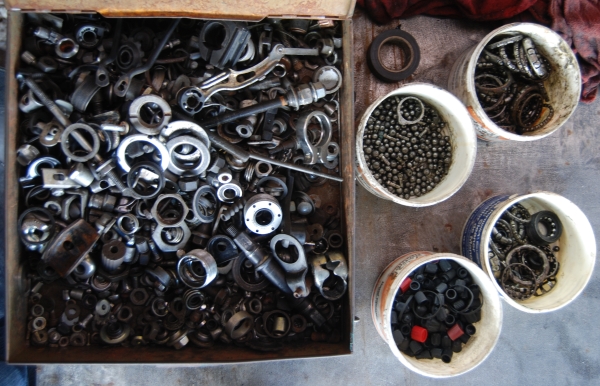One of my classmates produced their soundslide on The bells of Florida. I watched and listened to the presentation, and had some thoughts on what she’d done.
This soundslide is interesting for the information it brings, but the interest is present in spite of the absence of a strong story. Why isn’t it a story? A story is based on movement of characters and action through time, while this is, essentially, a good presentation of static facts. Part of the problem in turning this into a story is presented early in the soundslide — Century Tower is a long-time fixture on the UF campus. For most students, it is the definition of an unchanging landmark on campus. If the presentation had followed the evolution of Gill as a carillon player, or the development and practice of a single piece of music from initial introduction to finished performance, it would have been easier to create a story flow, but it would have been a very different soundslide.
The beginning has some inherent interest since almost everyone at UF is familiar with the carillon, but there’s a quote mid-way through the piece that seems a natural lead: when Gill talks about the carillon players not being like Quasimodo, I felt a natural lead. This soundslide led with an introduction to the interview subject (as my soundslide did), but the more I listen to soundslides, the more I wonder whether placing the interview subject ID might not better be left for later in the soundslide.
I felt the conclusion of the soundslide was successful, giving information that we didn’t have earlier (it’s possible to get a tour of the tower) and the interview subject’s feeling about an aspect of her work in the tower. The only thing that I missed is technical — after all the carillon music in the background, it would have been nice if there had been time to let the piece end on a chime note that faded out. It would have added a second or two, but it would have made for a great ending.
This piece ended up being weighted to the profile side rather than the campus life side, by about 65 – 35%. I like this proportion, and honestly think that making it more a "tour of the tower" would have weakened the presentation. In this case, letting us see the tower and the carillon through the eyes of a musician brought deeper understanding and a new perspective — both great things when it comes to a taken-for-granted landmark.
If asked to improve the soundslide, I would make the following suggestions:
1. More shots of students around the tower. We’ve been told it’s a common part of student life, but I remember only one shot of students — one or two more would be nice.
2. Tighten the practice console section. This is interesting, but could be tightened by a few seconds without losing impact.
3. Filter some of the heavy breathing/wind noise in the section where we hear footsteps going up the stairs. I really like the footsteps, but the breathing is distracting.
4. Use the seconds you save in (2) to close with a longer carillon note.
5. Lead with the Quasimodo line. It’s great.
My favorite part of the soundslide is the background track — the bells, footsteps, and other environmental sounds that underlay the interview. These sounds really added a great deal of interest and "feeling of place" to the overall presentation. I thought they were very effective and well done throughout.
All in all I enjoyed the soundslide very much. I learned new things about something I hear every day, and I was impressed with the quality of both photos and sound.




